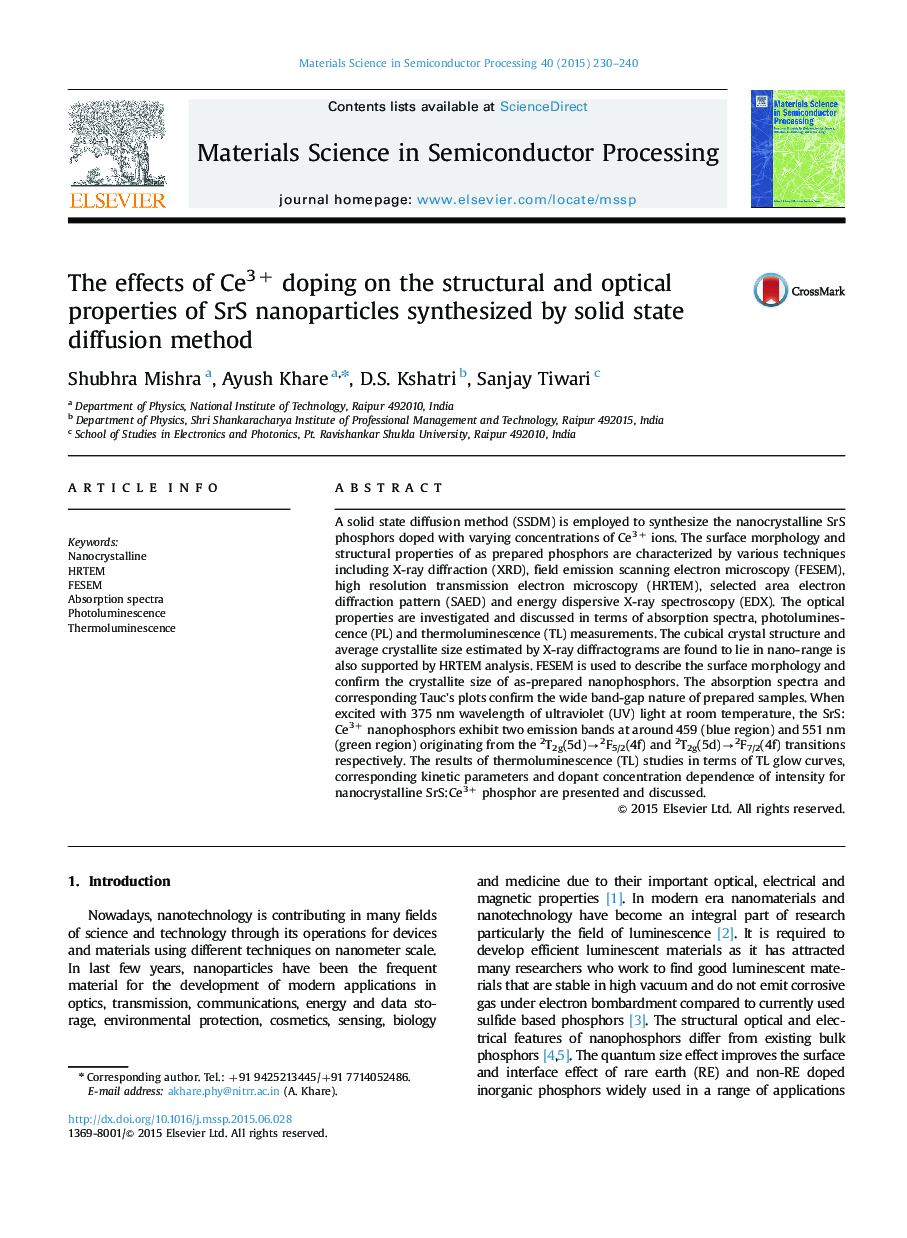| Article ID | Journal | Published Year | Pages | File Type |
|---|---|---|---|---|
| 7118768 | Materials Science in Semiconductor Processing | 2015 | 11 Pages |
Abstract
A solid state diffusion method (SSDM) is employed to synthesize the nanocrystalline SrS phosphors doped with varying concentrations of Ce3+ ions. The surface morphology and structural properties of as prepared phosphors are characterized by various techniques including X-ray diffraction (XRD), field emission scanning electron microscopy (FESEM), high resolution transmission electron microscopy (HRTEM), selected area electron diffraction pattern (SAED) and energy dispersive X-ray spectroscopy (EDX). The optical properties are investigated and discussed in terms of absorption spectra, photoluminescence (PL) and thermoluminescence (TL) measurements. The cubical crystal structure and average crystallite size estimated by X-ray diffractograms are found to lie in nano-range is also supported by HRTEM analysis. FESEM is used to describe the surface morphology and confirm the crystallite size of as-prepared nanophosphors. The absorption spectra and corresponding Tauc׳s plots confirm the wide band-gap nature of prepared samples. When excited with 375 nm wavelength of ultraviolet (UV) light at room temperature, the SrS:Ce3+ nanophosphors exhibit two emission bands at around 459 (blue region) and 551 nm (green region) originating from the 2T2g(5d)â2F5/2(4f) and 2T2g(5d)â2F7/2(4f) transitions respectively. The results of thermoluminescence (TL) studies in terms of TL glow curves, corresponding kinetic parameters and dopant concentration dependence of intensity for nanocrystalline SrS:Ce3+ phosphor are presented and discussed.
Related Topics
Physical Sciences and Engineering
Engineering
Electrical and Electronic Engineering
Authors
Shubhra Mishra, Ayush Khare, D.S. Kshatri, Sanjay Tiwari,
